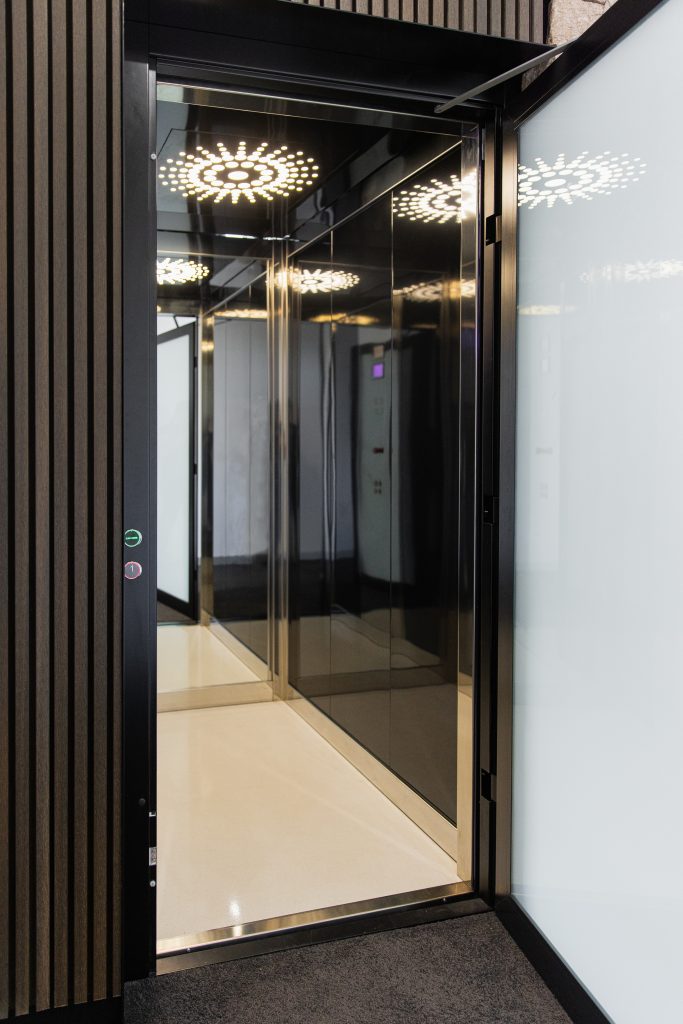Exploring the World of Elevators: Typical Problems Dealt With by Numerous Lift Devices
As we navigate with the upright transport systems of modern-day buildings, elevators attract attention as a crucial element of our lives. Nonetheless, behind their seamless operation lies a world of detailed devices that can occasionally encounter difficulties. From hydraulic elevators to traction systems and machine-room-less styles, each lift type features its set of typical concerns. Understanding these challenges is crucial for guaranteeing the smooth performance of these essential systems. Allow's discover the complexities that underlie the operation of lifts and the potential concerns that can occur, clarifying the elaborate web of lift mechanisms.
Hydraulic Lifts
Hydraulic elevators, often liked for low-rise buildings, use fluid stress to manage the activity of the lift cars and truck (lift repair companies). This device involves a hydraulic pump pushing oil right into a cyndrical tube, causing the lift to relocate the preferred instructions. While hydraulic elevators are understood for their quiet and smooth procedure, they do include their own collection of usual issues
One widespread problem with hydraulic elevators is oil leakage. Furthermore, concerns with the control system, such as faulty valves or a malfunctioning pump, can cause disruptions in the lift's activity.
Routine upkeep and prompt repair work are crucial to make sure the smooth functioning of hydraulic elevators. By attending to these typical concerns proactively, structure proprietors can lessen downtime and make sure the safety and security and efficiency of their vertical transport system.
Traction Lifts
When taking into consideration vertical transport systems in buildings, an additional typical type apart from hydraulic elevators is the traction lift. Grip lifts operate making use of a system of ropes and weights that relocate the lift vehicle by grasping onto the hoist ropes. This device enables smoother and quicker vertical transportation contrasted to hydraulic systems.
One of the usual problems dealt with by grip elevators is rope wear. The continuous movement of the ropes within the grip system can lead to damage over time, possibly triggering the elevator to malfunction or end up being hazardous for use. Regular assessments and upkeep of the ropes are important to make sure the lift's proper performance and security.
An additional problem that grip elevators may encounter is connected to the control system. Issues with the control system can result in problems such as unpredictable activity, delays in action times, and even complete closures. Normal screening and upkeep of the control system are critical to avoid such issues and guarantee the elevator's dependability.
Machine-Room-Less (MRL) Lifts

Among the key elements of MRL elevators is the compact gearless traction equipment that is set up within the hoistway. This machine efficiently drives the elevator auto without the need for bulky tools found in standard grip elevators. Additionally, MRL lifts usually use a weight system to balance the auto, additional improving their power effectiveness.
Regardless of their advantages, MRL lifts might face challenges connected to repair and maintenance due to the restricted space for tools installment. Accessibility for servicing components within the shaft can be restricted, needing specialized training for professionals. Proper upkeep schedules and normal examinations are essential to ensure the continued smooth procedure of MRL lifts.
Overloading and Weight Restriction Issues
Are lifts geared up to take care of excess weight loads efficiently and safely? Overloading and weight limit concerns are essential problems in elevator procedures. Lift makers design lifts with particular weight capabilities to guarantee passenger security and tools long life. Exceeding these weight limits can bring about various problems, including mechanical failings, delays, and safety and security risks.
When lifts are overwhelmed, it places too much strain on the motor, cords, and various other parts, potentially triggering breakdowns or failures. Safety and security systems such as sensors and overload sensors are in place to stop elevators from relocating if they discover excess weight. Additionally, exceeding weight limitations can lead to boosted power usage and damage my review here on the lift system.
To minimize straining problems, developing supervisors must prominently display weight restrictions in lifts and enlighten owners on the value of adhering to these constraints - lift repair companies. Routine upkeep checks by certified specialists can likewise help guarantee that elevators are operating within safe weight specifications. By attending to overloading and weight restriction concerns proactively, structure owners can improve elevator safety and security and performance
Electrical System Failures
Exceeding weight restrictions in elevators can not just lead to mechanical concerns however also potentially contribute to electrical system failures within the lift facilities. Electrical system failings are an important worry in lift procedure, as they can create unanticipated closures, malfunctions, or also safety hazards.
In addition, power surges or changes in the electric supply can also interrupt the elevator's operation, influencing its performance and security. These electric disruptions can damage delicate lift components such as control panels, circuit card, or sensors, bring about system failures. Normal upkeep and assessments are important to recognize and deal with possible electric issues promptly, ensuring the risk-free and effective operation of lift systems. By adhering to weight limitations and performing regular electric system checks, building proprietors can mitigate the risk of electrical failings in elevators.
Final Thought

Hydraulic lifts, commonly preferred for low-rise buildings, utilize fluid stress to manage the motion of the lift vehicle.When thinking about vertical transportation systems in buildings, one more usual type aside from hydraulic lifts is the traction elevator. Traction lifts operate utilizing a system of ropes and weights that relocate the lift cars Discover More and truck by grasping onto the hoist ropes. Unlike standard elevators that call for a different device space to house the devices, MRL elevators integrate most of the components within the shaft, getting rid of the requirement for a specialized equipment space.In verdict, elevators deal with common problems such as hydraulic breakdowns, traction system failings, and electrical system issues.